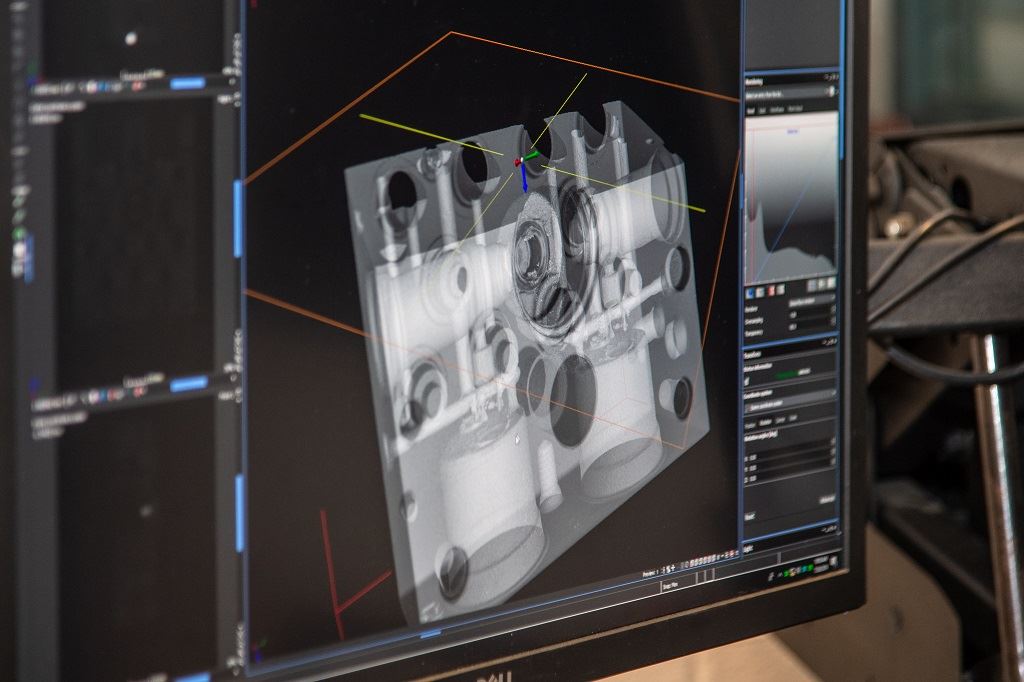![Auburn's new PSX Macro CT X-Ray Vault examines a part [Image: Auburn University]](https://fabbaloo.com/wp-content/uploads/2020/05/auburnuniversity_img_5eb092474cb4f.jpg)
A $1.5M grant is setting Auburn University up to enhance its metrology efforts for additive manufacturing.
The grant, from the National Institute of Standards and Technology (NIST), goes to the university’s National Center for Additive Manufacturing Excellence (NCAME) in its Samuel Ginn College of Engineering.
The costly tool shows again that one big investment can ultimately save on costs. The system is fully customized for the Auburn engineers, with a digital radiology vault from Pinnacle X-Ray Solutions set for all-important non-destructive testing.
Inspecting Additive Manufacturing
Parts made via additive manufacturing are, generally speaking, not identical drop-in replacements to their traditionally made predecessors.
This is due not only to redesign through snazzy efforts in DfAM (design for additive manufacturing) that may see new structures and shapes, more lattices or lightweighting measures, but in fact the way those structures came together. Metal additive manufacturing is proving an intriguing process — and one that still raises many questions. Will sintered laser powders act as expected in a final part?
Destructive testing can be a great hands-on approach to answering such questions: how much force, and where applied, does it take to break a part? Nothing will so surely answer questions of structural deficiency as seeing exactly where those breaking points are.
But additive manufacturing isn’t, well, cheap. Breaking those parts, especially those that pass muster, is rather a waste. Non-destructive testing is increasingly coming into favor, with advanced tools taking a look inside — think X-ray, think CT scan — the bones of the part, as it were. These hands-off approaches are valuable in validating structural integrity (or, of course, showing just where those structures lack integrity) while keeping the part in tact.
Auburn’s National Center for Additive Manufacturing Excellence
The College of Engineering at AU formed NCAME in 2015 for collaborative advancement of additive manufacturing.
NCAME is a public-private partnership comprising participation from more than 40 industry members, government, academia, and nonprofits. Focuses include research and standards, as well as education and training.
Earlier this month, NCAME announced an expanded partnership with Huntsville city schools, for example, introducing a second EOS M 290 to the district. Now two high schools in the district have access to industrial metal 3D printing systems — the first installation, two years ago, was the first such in a US high school.
As work continues at NCAME, focus includes collaborative partners NIST and NASA in particular. The NIST grant enabled the acquisition of the new X-ray system — and NASA is certainly among those partners set to benefit from its use.
“There are tremendous applications of this, especially for mission critical parts research we are conducting for NASA,” Auburn’s Michael Ares tells us.
Auburn recently received a $5.2M award from NASA to focus on additive manufacturing to improve liquid rocket engines’ performance — so ensuring the right tools are in place for optimal additive manufacturing is certainly in sight for the national space agency.
![An Auburn University researcher studies a 3D rendering of scans produced by a state-of-the-art $1.5 million X-Ray CT system recently acquired through a grant from the National Institute of Standards and Technology. [Image: Auburn University]](https://fabbaloo.com/wp-content/uploads/2020/05/Auburn_University_College_of_Engineering_Additive_Mfg1_img_5eb09247b9cac.jpg)
The setup is set to allow for non-destructive examination of finished parts and of real-time process monitoring of additive manufacturing builds in process. These two usages will allow researchers to ascertain internal structures’ dimensions and quality as parts are built as well as upon their completion, allowing for deeper understanding of the full process.
“…[W]hile we’re building a component with additive, it’s difficult to monitor what’s happening,” said Bart Prorok, professor of materials engineering and principal investigator on the NIST grant. “With this new system, we can take two-dimensional X-ray pictures of a metal structure for real-time process monitoring or a series of 2-D images in 360 degrees of rotation that are then reconstructed into a 3-D representation of the build.”
Via NCAME











Researchers are now able to procure incredibly powerful 3D printing equipment at lower costs to enable work that was previously impossible.